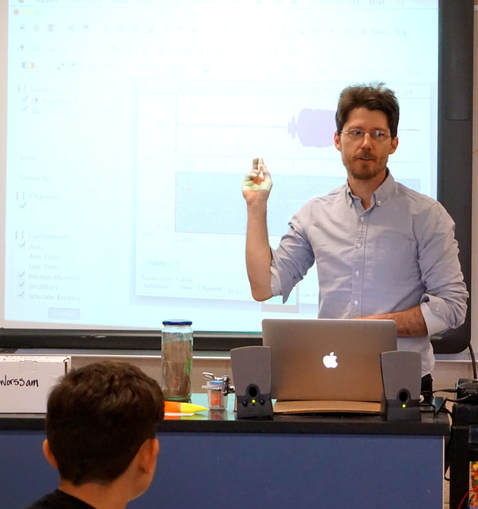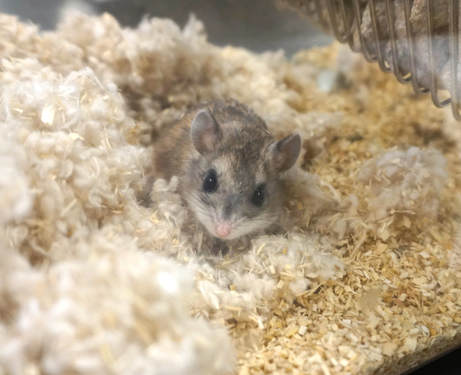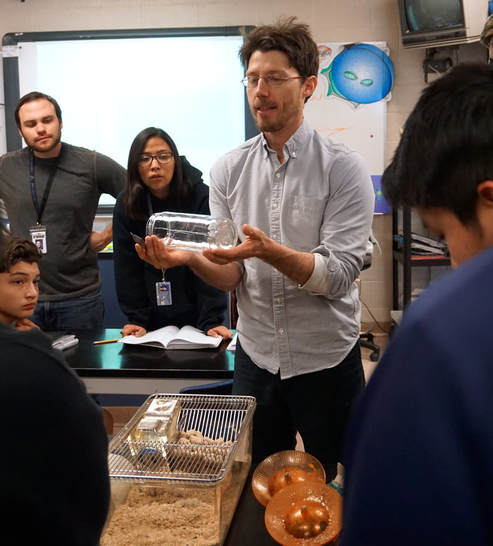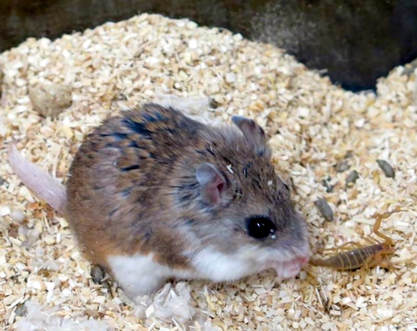|
Dr. Bret Pasch, Assistant Professor in the biology department at NAU, is partnering with one of Jillian Worssam’s 8th grade science classes at Sinagua Middle School through the “Scientists in the Classroom” program founded by Jillian. Bret specializes in recording and analyzing mouse vocalizations and has brought his digital sound recorder into Jillian’s classroom so the students can learn first-hand about singing mice. These grasshopper mice have a relatively loud voice so other mice can hear them over the vast distances in the desert where they live. Bret shared audio recordings of the mice, and then slowed them down so the sound was more apparent to those of us with ears that don’t hear at high frequencies any more! He also showed the students how they can measure both the frequency and duration of the sounds on the sonogram. The students are making hypotheses about whether the male or the female mice will vocalize more frequently, and which will have a higher pitch, higher amplitude (loudness), and longer duration of the sounds. Bret will leave the mice (male on one side of the room and female on the other) for the next few months along with the digital recorders so students can capture their vocalizations. The mice are nocturnal and vocalize more at night, so the students will be able to access their sounds when they return to school each day. Bret fed the mice while eager students looked on. He fed them their natural diet of bark scorpions, which are one of most venomous scorpions in Arizona. These mice have a mutation in their pain receptors so they don’t feel the sting as much as another species of mice would. They also like Pinacate bugs that lift their hind ends and spray as a defense strategy. The mice have a behavior where they stick the bugs abdomens in the ground so they don’t get sprayed and then they eat the heads first! Thank you to Bret for participating in the Scientists in the Classroom program and also for elucidating information on singing mice through a Science on Tap presentation to the community! Flagstaff really appreciates your scientific outreach to both our schools and our community! Note: You can also see and hear the mice at Bonnie Stevens’ Brain Food story on Bret Pasch here!
1 Comment
6/9/2021 09:38:00 pm
Great article! Thank you for sharing this informative post, and looking forward to the latest one.
Reply
Leave a Reply. |




